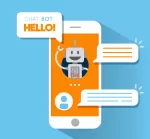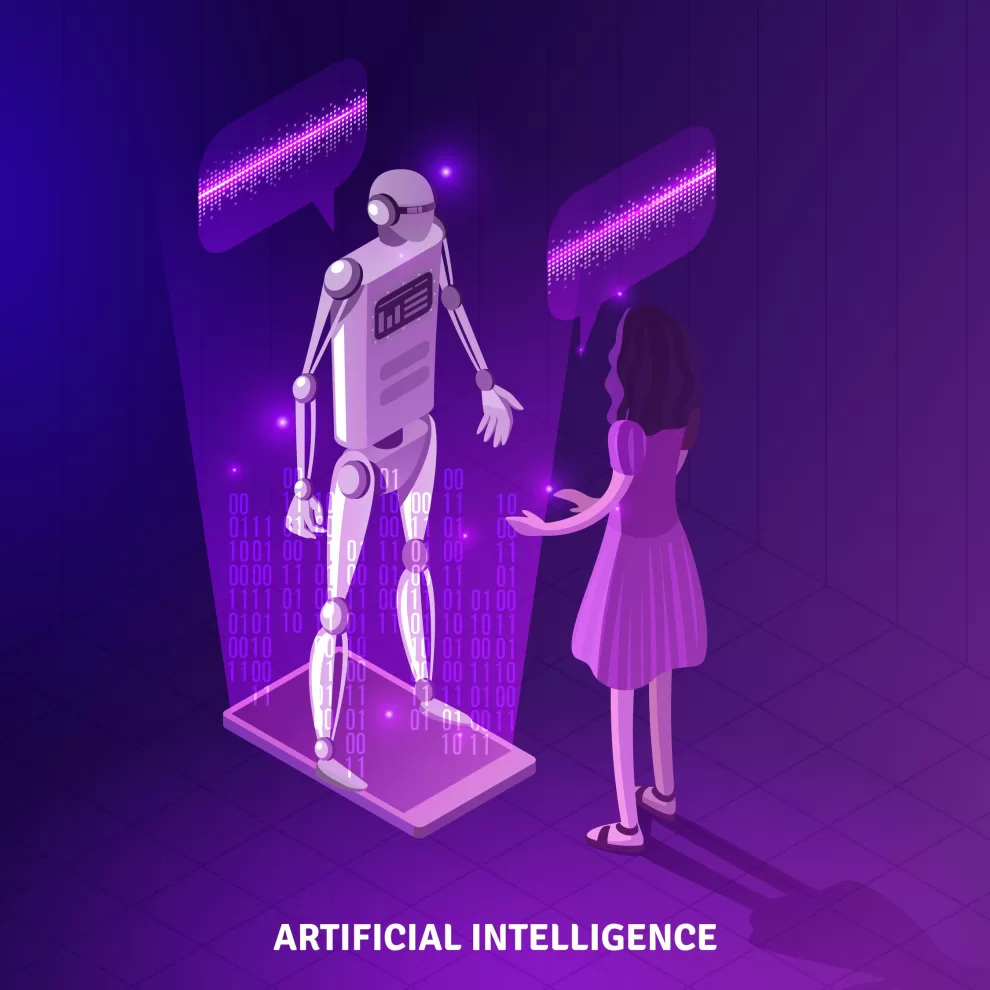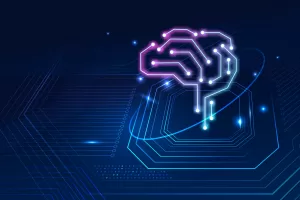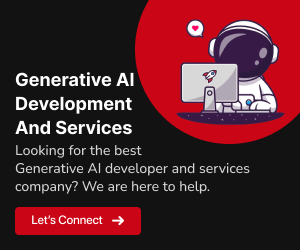Generative AI, a remarkable subset of artificial intelligence, is transforming the way we create content, interact with machines, and even foster creativity. These AI systems are designed to generate content that is eerily similar to what humans can produce, be it text, images, music, or more. In this blog, we will take a deep dive into the concept of generative AI, exploring its applications, and guiding you on when and how to employ it effectively. Additionally, we will introduce some of the most popular tools and platforms that can help you harness the power of generative AI.
What is Generative AI
Generative AI, short for Generative Adversarial Networks (GANs) or Transformer-based models, represents a branch of artificial intelligence that focuses on the creation of content. These AI systems are particularly skilled at generating data that exhibits human-like patterns and characteristics.
At the heart of generative AI lies deep learning. These models are trained on vast datasets and learn to understand the structure and patterns within that data. They use this knowledge to generate content that is contextually relevant, coherent, and often indistinguishable from human-generated content.
Now that we’ve established what generative AI is, let’s explore the diverse applications and the best practices for its implementation.
When to Use Generative AI
Generative AI, a groundbreaking subset of artificial intelligence, is revolutionizing various industries by simulating human-like creativity and understanding. Let’s explore the diverse applications and use cases where this technology shines:
Content Generation:
Generative AI is a game-changer for content creation. If you’re a writer, marketer, or content creator, you can utilize AI to automate content generation, whether it’s blog posts, product descriptions, or creative storytelling. AI not only speeds up the content creation process but also ensures consistency in tone and style. It can also be a valuable tool for A/B testing different versions of content to determine what resonates best with your audience. For instance, a marketing team can employ generative AI to generate multiple ad copy variants and analyze which one performs the best in terms of user engagement and conversion rates.Chatbots and Virtual Assistants:
The world of customer service benefits immensely from generative AI. Chatbots and virtual assistants powered by AI can provide human-like responses to user queries, improving the user experience and offering 24/7 support. These AI-driven agents can handle routine customer inquiries, process orders, and even assist in complex troubleshooting scenarios. For businesses, this translates to enhanced customer satisfaction and cost savings by reducing the need for large customer support teams. By continuously learning from user interactions, these chatbots can become more adept at addressing specific user needs.
Language Translation:
Overcoming language barriers is easier with generative AI. AI can automatically translate text from one language to another, preserving the context and nuances of the original content. Language translation powered by generative AI is indispensable for international business, diplomacy, and content localization. It ensures that communication remains precise and relevant even when crossing linguistic boundaries. For global companies, it allows them to reach new markets and connect with diverse audiences without the need for extensive human translation efforts.
Personalization:
E-commerce websites and content platforms leverage generative AI for personalized user experiences. By analyzing user data, AI can generate product recommendations, content suggestions, and advertisements tailored to individual users. This personalization enhances user engagement and drives sales by presenting users with products or content that align with their preferences and behaviors. For instance, when a user shops online, AI analyzes their past purchases, browsing history, and interactions to suggest products they are likely to be interested in, thus increasing the chances of conversion.
Art and Creativity:
Generative AI can inspire artists and designers by generating unique artwork based on textual descriptions. Tools like DALL-E have opened up new possibilities for creative collaboration between humans and machines. Artists can provide textual prompts, and the AI interprets them to create artwork that aligns with the descriptions. This technology has the potential to spark new waves of creative expression and experimentation, as artists can use AI as a source of inspiration or even as a collaborative partner in the creative process.
Data Augmentation:
In data science and machine learning, generative AI plays a pivotal role in data augmentation. It creates synthetic data to supplement real-world datasets, enhancing the training of models, especially when working with limited or imbalanced datasets. This technique helps address the scarcity of data for certain tasks and improves the generalization of machine learning models. For example, in medical imaging, where datasets can be limited and costly to acquire, generative AI can generate synthetic images of diseases or anomalies to improve the accuracy and robustness of diagnostic models.
Medical Research:
AI assists in generating hypotheses and contributes to drug discovery by analysing vast amounts of medical data. It can identify patterns and potential breakthroughs in the medical field, significantly accelerating research and development. In medical image analysis, generative AI models can help in generating synthetic images for training diagnostic algorithms. This speeds up the deployment of AI in clinical settings, aiding in early disease detection and improving patient outcomes.
How to Use Generative AI
Before diving into the implementation of generative AI, it’s essential to follow a structured approach that ensures success. Let’s explore the critical steps involved in effectively utilizing this groundbreaking technology:
Define Your Objective:
At the outset, defining your objective is crucial. Whether you’re automating content creation, enhancing customer service, or driving research advancements, a well-articulated goal forms the bedrock of a successful generative AI project. Your objective will guide the entire implementation process, from selecting the right tool to fine-tuning the model.
Select the Right Tool:
Choosing the appropriate generative AI tool or platform depends on your specific use case. OpenAI’s GPT-3, known for its text generation capabilities, might be the go-to choice for content generation and chatbots. For natural language understanding tasks, Google’s BERT is a strong contender. Specialized tools like DALL-E are perfect for image generation. Assess your project requirements and select a tool that aligns with your goals.
Data Collection:
The quality of your data profoundly influences the performance of your generative AI model. Collecting relevant data is a pivotal step in the implementation process. Ensure that your data is not only abundant but also clean, diverse, and representative of the scenarios you aim to address. This data will serve as the foundation for training and fine-tuning your AI model.
Fine-Tuning:
Depending on your chosen tool, fine-tuning may be necessary to adapt the model to your specific use case. This process involves training the AI on your data, making it more tailored to your objectives. It’s also an opportunity to ensure ethical considerations are taken into account, preventing the generation of biased or inappropriate content.
Testing and Validation:
Thoroughly testing and validating your generative AI solution is essential before deployment. Rigorous testing is required to ensure that it aligns with your predefined objectives. Additionally, it’s crucial to assess the ethical and quality standards of the content it generates. Bias testing, in particular, is crucial to avoid perpetuating stereotypes or producing harmful content.
Deployment:
Once your generative AI solution has passed the testing and validation phases and you’re satisfied with its performance, it’s time to deploy it in your application or system. However, the process doesn’t end here. Continuously monitor the AI’s output and be prepared to perform regular updates to adapt to the evolving landscape of AI. As the field continues to advance, staying updated is vital for maintaining the effectiveness and relevance of your generative AI.
Also read : “Top 9 Generative AI Applications and Tools“.
Generative AI Tools to Consider

Now that we’ve explored the numerous applications and best practices for utilizing generative AI, it’s essential to consider the tools available to bring these applications to life. Below, we introduce some prominent generative AI tools, each with its own unique strengths and applications.
OpenAI’s GPT-3:
OpenAI’s GPT-3 is a versatile generative AI model known for its ability to generate human-like text across various applications, including text generation, chatbots, and language translation. Its adaptability and ease of integration make it a top choice for a wide range of text-based tasks.
Google’s BERT:
Google’s BERT is renowned for its natural language processing capabilities, making it an ideal choice for tasks like sentiment analysis and language understanding. This model is highly effective in tasks that require an in-depth understanding of language context.
DALL-E:
DALL-E, another creation from OpenAI, specializes in generating images from textual descriptions, making it a unique tool for artists and designers. Its innovative image generation capabilities have opened new frontiers for creative expression.
Hugging Face Transformers:
Hugging Face offers a wide range of pre-trained transformer models suitable for various NLP tasks, making them highly accessible for developers looking to integrate generative AI into their applications. This extensive library provides developers with the tools to tackle a wide array of NLP challenges.IBM Watson:
IBM Watson offers a comprehensive suite of AI solutions, including chatbots and language translation services. It’s a reliable choice for businesses seeking to improve customer experiences and operational efficiency. IBM Watson’s range of AI solutions can be seamlessly integrated into your existing systems, enhancing the capabilities of your applications.
Conclusion
Generative AI is a transformative force with the potential to reshape numerous industries. By setting clear objectives, choosing the right tools, and adhering to best practices, you can leverage the capabilities of generative AI to achieve your goals efficiently. As the field of AI continues to evolve, staying informed about the latest tools and techniques is essential for successful implementation. Generative AI offers a world of opportunities, and understanding when and how to use it effectively can provide a significant competitive advantage.


























Add Comment